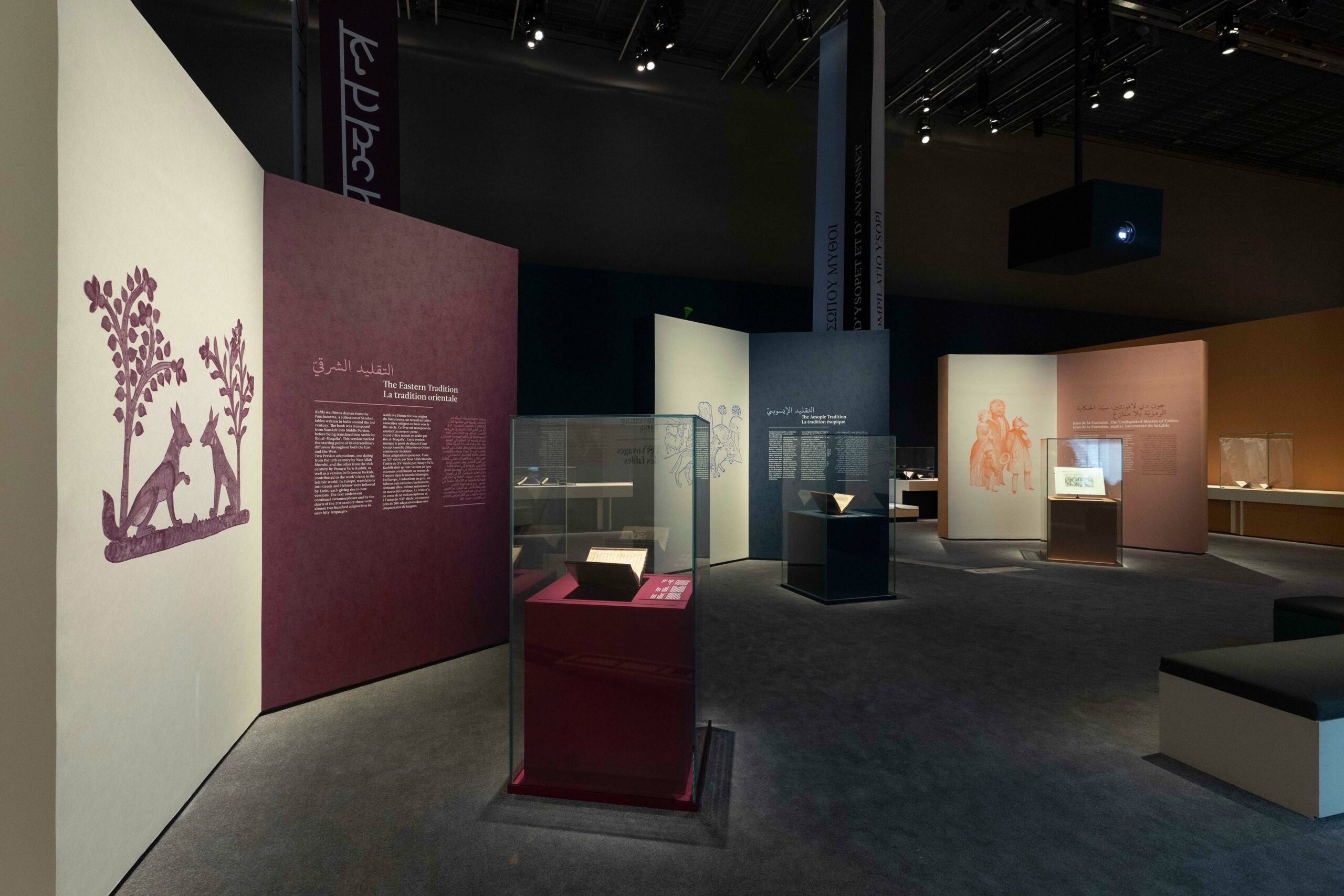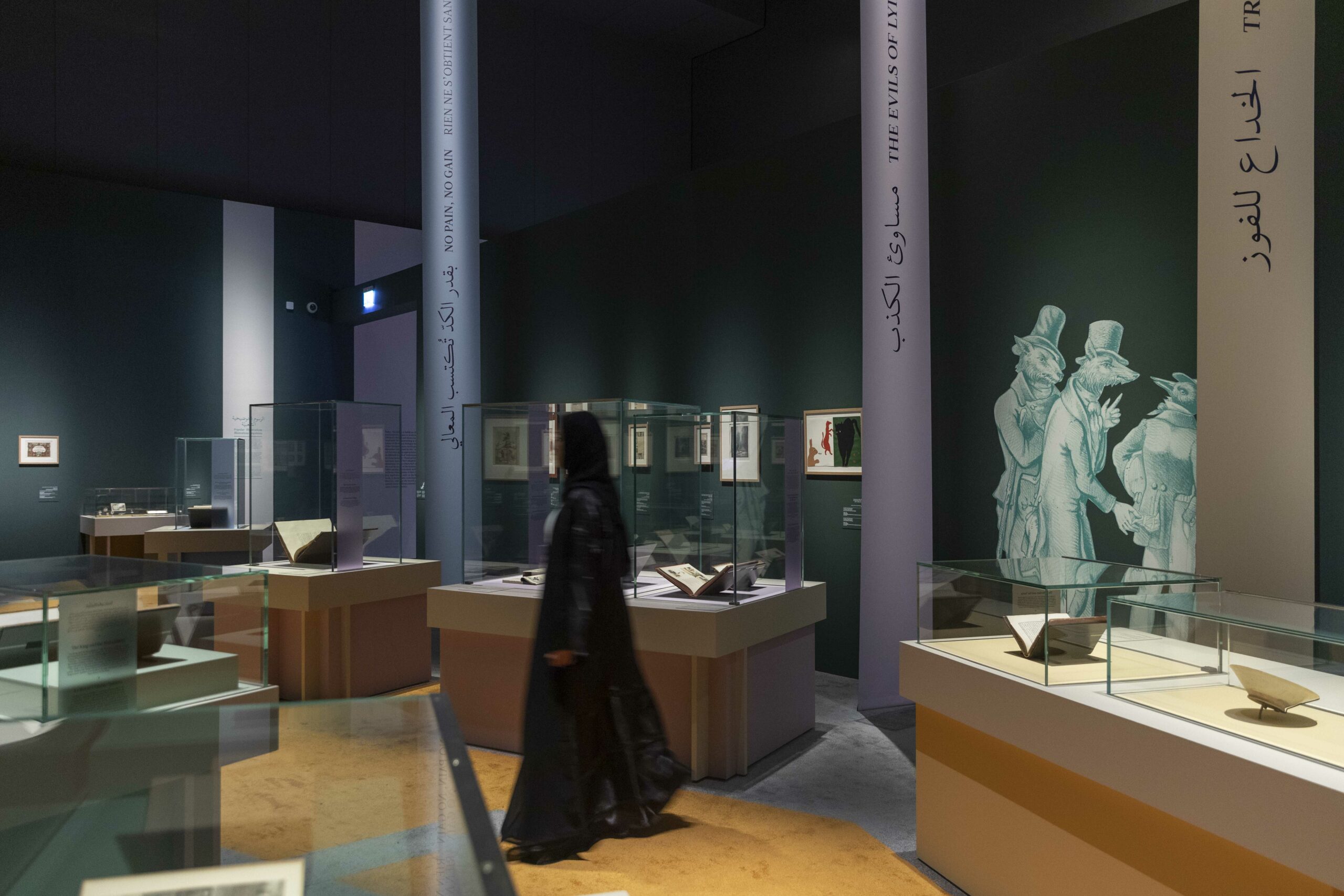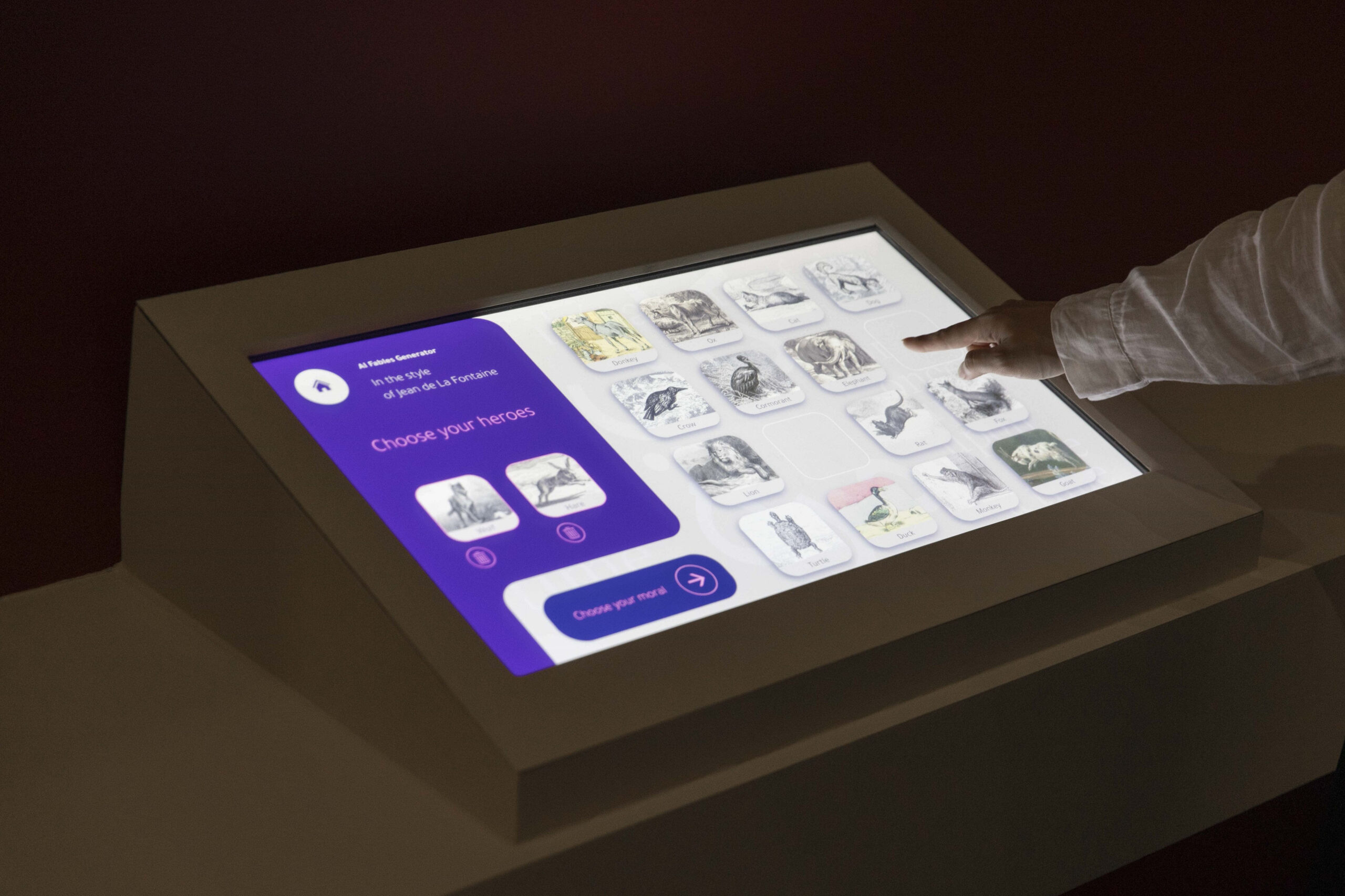CREATING THE NARRATIVE OF AN EXHIBITION
From 26 March to 21 July 2024, Louvre Abu Dhabi will host the new international exhibition “From Kalila wa Dimna to La Fontaine: Travelling through Fables “. Co-organised by the Bibliothèque nationale de France, Louvre Abu Dhabi and France Muséums, the exhibition takes its inspiration from illustrated fables and ushers us into the world of animal tales.
The curating team is headed by Annie Vernay-Nouri, Former Chief Curator, Oriental Manuscripts Department at the Bibliothèque nationale de France. With more than 130 works of art displayed, including rare manuscripts, paintings and contemporary works, the exhibition traces the history of the literary genre of the fable from its origins in India and Greece, and follows its developments through Aesop in the Greco-Roman world and Ibn al-Muqaffa and his Kalila wa Dimna in the Arab-Muslim world.
Filling an area measuring 600 m2, the exhibition explores the rich heritage of fables, highlighting their educational role and social significance. Reflecting a society, its rules and its foundations, fables have always been used to reveal, interpret and even guide moral behaviour throughout history. These tales have not only been translated from one language to another, but have also circulated between societies, crossing continents and reflecting the richness of intercultural dialogue right up to the present day.
Fables are not only a written tradition; in many cultures they are also visual and oral. In addition to the books and manuscripts presented, there are paintings, illustrations, artefacts, contemporary reinterpretations and mediation devices to help explain the role played by the illustrations in these stories.
ENHANCING THE VISITOR EXPERIENCE WITH MEDIATION
By its very nature, a museum is a narrative space that, in some cases, may prompt a change in understanding in its visitors. It is for experts in the field, such as France Muséums, to create and offer the public an engaging experience, capable of transforming their perception of the world around them.
The role of France Muséums is to assist its clients, in particular Louvre Abu Dhabi, in relating the narrative of temporary exhibitions. This approach lies at the heart of the design and production work proposed by France Muséums for this exhibition, in partnership with Louvre Abu Dhabi’s teams and the scenographic group led by Agence Clémence Pharell. France Muséums deploys its mediation and production teams to devise a presentation focused on the visitor’s experience, enriched by a variety of multi-sensory interpretation devices.
Journeying through these tales, the exhibition showcases the history of the animal fable tradition and offers a vision of cultural developments, highlighting the influence of translations in the spread of these stories down the centuries. It is therefore the responsibility of the mediation teams to design tools that will encourage visitors to contemplate, interact with and play with the interpretation materials throughout the exhibition.
Two devices in particular will engage visitors’ senses, by returning the fables to their original method of transmission: storytelling.
The optical theatre
In partnership with the artist Pierrick Sorin, an interactive “optical theatre” inspired by La Fontaine’s fable The Tortoise and the Two Ducks presents a virtual hologram that performs the fable in a setting composed of an animated video and an assortment of physical objects. This production gives the fable a new oral quality and thus delivers a more sophisticated narrative.
The rotunda
The centrepiece of the exhibition “From Kalila wa Dimna to La Fontaine: Travelling through Fables”, this immersive room transports visitors into a space dedicated to listening to the story of The Dove with the Necklace, taken from Ibn al-Muqaffa’s collection of tales, “Kalila wa Dimna”. A film projected onto the ceiling invites visitors to lie on the floor in the middle of the room for a contemplative, timeless moment.
These different interpretation devices serve as points of contact with visitors, who become active participants in their visit. The devices stimulate curiosity and ensure a constant level of engagement throughout the visit. They also help visitors to take a fresh approach to how they learn about the works on display. The education tools thus encourage deeper exploration of the links between the different artistic traditions, art forms and periods addressed in the exhibition.
GENERATIVE ARTIFICIAL INTELLIGENCE SERVING THE VISITOR EXPERIENCE
One of the primary innovations in this exhibition is the introduction of generative artificial intelligence. At the end of the presentation, visitors are invited to generate their own story in English, French or Arabic. By selecting a writing style from those of the authors discovered in the exhibition, and choosing characters and a moral, a personalised fable based on the criteria selected is then generated by the AI. Visitors can then download their fable and the illustrations of its characters using a QR code.
By integrating artificial intelligence into this education tool, the teams of France Muséums and Museomaniac have developed an innovative experiential approach aligned with the curator’s scientific proposal. The system aims to meet several objectives. Above all, it offers a fun and interactive approach to the literary genre of fables, while also embracing educational and didactic issues. By creating personalised fables, visitors can immerse themselves in a fascinating world, while putting into practice the knowledge they have gathered in the exhibition. In selecting the characters, style and moral of their story, they explore the nuances of the literary genre and leave with a tangible memory of their visit.
By blending tradition and innovation, France Muséums creates memorable visitor experiences in tune with contemporary issues, while adapting to new practices and ways of learning.
France Muséums supports its partners and clients in the conception and production of innovative, accessible experiences designed to harmonise with the scientific project. Using inventive interpretation devices during their exhibition tour, visitors are able to appreciate the works holistically, combining both sensory and intellectual dimensions.
By encouraging active and participative investigation, through the integration of such aspects as immersion and sensory experiences, France Muséums and its partners create welcoming and inclusive environments in which each visitor can flourish, develop, and enjoy an engaging visitor experience.
This project would never have been possible without France Muséums’ multi-skilled team composed of Adrien Berthelot, Programming and Production Director, Francesca Crudo, C Head of the Exhibition Production Department, Deputy to the Director of Programming and Production, Maud Ramier, Project Manager, Pauline Vernières, Temporary Exhibition Officer, Mathilde Dalmas, Temporary Exhibition Officer, Albert Naïm, Visitor Experience Manager, Elen Lossouarn, Senior Mediation Officer, Orlane Lefeuvre, Mediation and Programming Officer, Lise Iguedjtal, Artwork Registrar, Ophélie Guinet, Artwork Registrar, Charlotte Clergeau, Digital Project Officer, Zeynep Inanc, independent Museum Operations Project Manager, and their associates.
We also wish to thank Lucie Vadé,Touring Exhibitions Manager at the Bibliothèque nationale de France and all the teams at the Louvre Abu Dhabi, particularly Rajeev Gopinadh, Temporary Exhibitions and Special Projects Manager, Alice Querin, Temporary Exhibition Unit Head, Violaine Desjonqueres, Temporary Art Exhibition Project Management Specialist,Rawdha Ahmed AlAbdouli, Curatorial Assistant and Fakhera Ahmed Mubarak Alkindi, Senior Curatorial Assistant.




